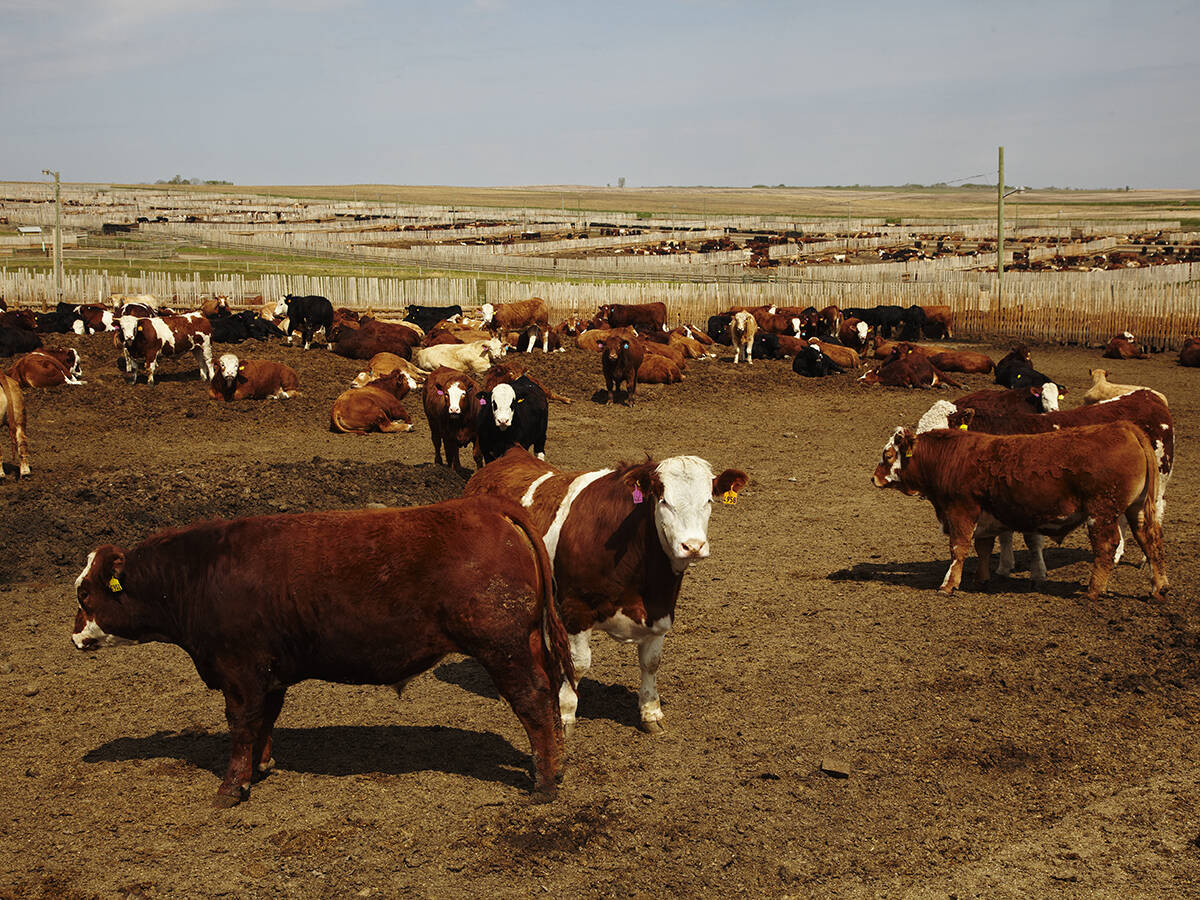This cattle market information is selected from the weekly report from Canfax, a division of the Canadian Cattlemen’s Association. More market information, analysis and statistics are available by becoming a Canfax subscriber by calling 403-275-5110 or at www.canfax.ca.
Fed market sizzles
The western Canadian fed market has exceeded expectations as prices continue to set new highs. Over the past seven weeks, fed prices have rallied $20 per hundredweight, going from $210 to now averaging in the low $230s.
Read Also

Canfax cattle market report – November 13, 2025
The Canfax cattle market report for November 13, 2025. Fed & feeder cattle prices, butcher cow trends, and cutout market insights.
Fed calf volumes continue to be light and there are reports that fed calves are three to four weeks behind schedule. There are a few reasons for that. This was a tougher winter compared to last year, and many producers are also feeding more oats in their rations. Lightweight placements less than 700 pounds in September and October were down 20,000 head compared to the previous year.
Competition on the cash market was good last week, with both major packers buying cattle. Dressed sales were reported from $385-$390 per cwt. delivered. Cattle were being scheduled from immediate to the first week in June delivery.
Roughly 50 percent of last week’s cash offering were yearlings, and 50 percent were fed calves. From their highs in late January, western Canadian steer carcass weights have declined 89 pounds. Carcass weights usually don’t bottom until early June. For the end of April, western Canadian steer carcass weights are the smallest since 2018.
In Ontario, dressed sales were reported at $375 per cwt. delivered, fully steady with the previous week. Cattle were being booked from one to three weeks out.
Fed calf volumes are expected to gradually increase into the second half of May. Packers have started to scale back hours to match tighter supplies.
In the U.S., dressed sales in Iowa and Nebraska ranged from $279-$281 per cwt., $2-$4 per cwt. lower than the previous week. Live sales in Nebraska were at $176 per cwt., while sales in Texas and Kansas ranged from $170-$172 per cwt.
With lighter slaughter rates and smaller carcass weights, weekly beef production was estimated at 509 million lb., down 7.6 percent from last year. For the beginning of May, this is the smallest U.S. beef production since 2018, excluding 2020 due to COVID.
Cow prices rise
Non-fed offerings were manageable last week, and cow prices rallied $3-$4 per cwt. higher than the previous week. D2 slaughter cows averaged $150.21 per cwt. and are within $1 per cwt. of record highs seen in 2015. D3 cows traded $20 per cwt. back of D2s, averaging $130.14 per cwt.
Dressed cow bids rallied to a new historic high last week, with reports from $280-$290 per cwt. delivered. Last week’s average D2 cow/AB steer price spread continued to seasonally narrow to 65 percent. Butcher bulls traded in a tight range and averaged $155.23 per cwt.
Western Canadian non-fed slaughter for the week ending April 29 was 21 percent lower than the previous week at 5,965 head, and year to date was up 11 percent to 135,648 head.
Good feeder demand
Good broad-based feeder demand was observed last week and prices traded generally steady to $1 per cwt. stronger. Middle weight 500-600 lb. steers and heifers firmed modestly higher and established new historic highs.
Good grass interest also firmed 600-700 lb. steer calves $3 per cwt. higher than the previous week to a new record high. Good eastern interest continued for quality middle weight calves.
Weekly auction volumes were seasonally large because some feedlots and backgrounders took advantage of strong prices and flipped feeders to take profit as opposed to grazing or finishing them through a potentially dry summer.
Total auction volumes were 14 percent larger than the previous week at 30,525 head and were 11 percent larger than the same week last year. Year-to-date auction volumes last week were three percent larger than year ago, totalling 488,273 head.
Canadian feeder exports to the United States for the week ending April 22 were down 13 percent from the previous week to 4,253 head and were 17 percent lower than a year ago. Year-to-date feeder exports continue to track significantly below a year ago, down 55 percent at 43,080 head.
U.S. cutouts steady
In U.S. beef trade, cutouts were the highest since September 2021 and traded sideways last week. Choice cutouts straddled the US$310 per cwt. mark for most of last week, closing at $309.52 per cwt. Select cutouts closed at $287.49 per cwt. The Choice/Select spread has been moving seasonally higher.














